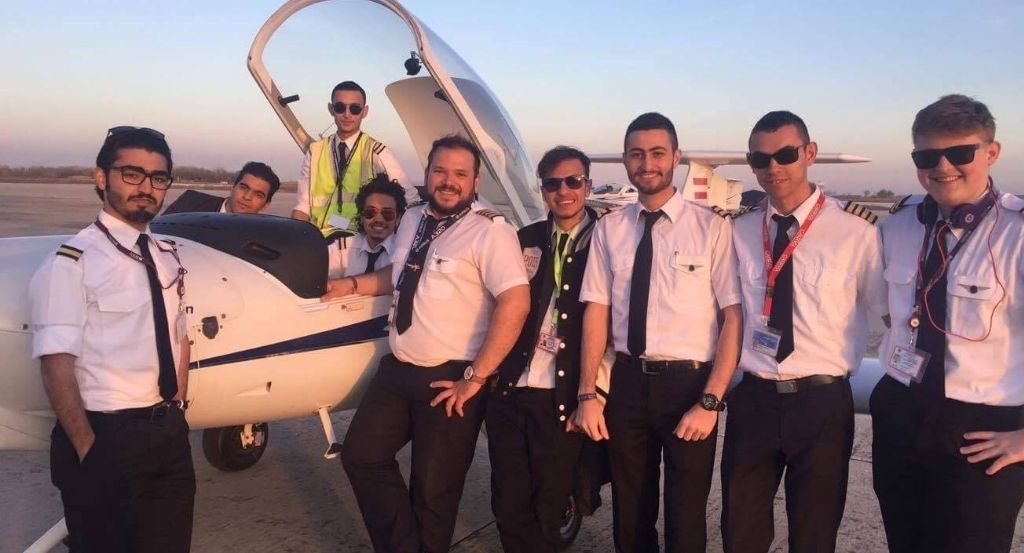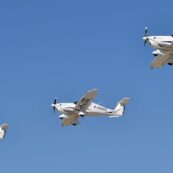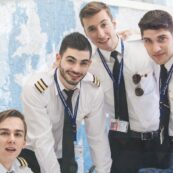The Role of Automation in Next-Generation Airline Pilots: Friend or Foe?

Amidst continual advancements in aviation technology, cockpit automation has experienced dramatic change from the primitive autopilots of the early 20th century to the advanced AI-based decision support systems of the present day.
The changes have irrefutably improved flight safety and efficiency, but in turn, have raised a critical debate:
Are airline pilots relying too much on automation to the detriment of their manual flying skills?
Diverging perspectives continue to emerge, each raising important questions about the role of the modern pilot. Flight training academies, including Egnatia Aviation, have responded in various ways, reflecting the broader industry engagement with this complex issue.
As the conversation deepens, the following sections will explore the contours of this debate—examining how automation is reshaping airline pilot responsibilities and what that might mean for the future of flight.
How Automation Upgrades Aviation Performance
The introduction of advanced automation has undoubtedly:
- revolutionised commercial aviation,
- enhanced safety,
- reduced pilot fatigue,
- and increased operational efficiency.
Supporting Long-Haul Operations and Reducing Mental Load
One of automation’s clearest benefits is its role in reducing pilot workload, particularly on long-haul routes where fatigue can compromise attention and performance. Modern aircraft utilise flight management systems (FMS), autopilot, auto-throttle, and navigation systems that manage most of the operational burden during cruise phases.
By automating repetitive tasks, these systems free pilots to focus on situational awareness, decision-making, and safety checks—areas where human judgment is irreplaceable. According to a study, automation has significantly reduced pilot fatigue during extended flights, thereby reducing human error, historically a contributor to incidents.
Enhancing Safety with Predictive and Reactive Systems
Today’s AI-enabled systems provide multiple layers of risk prevention. Collision avoidance, terrain awareness, predictive weather routing, and engine monitoring systems now play a proactive role in flight safety. Tools such as TCAS (Traffic Collision Avoidance System) and EGPWS (Enhanced Ground Proximity Warning System) alert pilots in real-time, allowing them to act before a situation escalates.
Emerging technologies also include fatigue monitoring, AI-assisted co-pilot functions, and decision support systems. These are already being developed, tested ,and, in some cases, implemented. They make a strong case for embracing the Automation Airline Pilot model, as long as it’s balanced with traditional airmanship.
Increasing Fuel Efficiency and Reducing Emissions
Another clear advantage of automation lies in its ability to maximise fuel efficiency and streamline operations. Automated route planning can dynamically adjust flight paths for optimal winds, weather avoidance, and fuel economy. According to the International Air Transport Association (IATA), fuel efficiency improvements made possible through automated systems save the industry billions in costs annually while reducing carbon emissions—a win for both airlines and the environment.
The result is a reduction in fuel burn by as much as 5% and fewer carbon emissions per kilometre flown. For airports like Lydia Aerodrome (Egnatia Aviation’s private airport), where future-focused aviation is being trialled, this level of efficiency is becoming the new standard.
When Automation Challenges Airline Pilot Preparedness
Despite the many benefits, automation isn’t flawless—and neither is our relationship with it.
The Risk of Over-Reliance on Technology
Chief among automation’s critical caveats is the risk of complacency. Over time, heavy reliance on automated systems can erode pilots’ situational awareness and manual flying abilities, a phenomenon sometimes referred to as “skill fade”.
Studies from the Federal Aviation Administration (FAA) and the European Union Aviation Safety Agency (EASA) reveal a worrying trend: pilots, especially those early in their careers, may become so accustomed to flying via instruments and systems that they are underprepared for moments requiring hands-on intervention.
When Systems Fail, Humans Must Prevail
Even the most advanced systems can misread data or disengage unexpectedly. In such cases, pilots must revert instantly to manual control, often under intense pressure.
Flight schools, such as Egnatia Aviation, now simulate automation failures to prepare future airline pilots for these critical moments. Their goal is simple: ensure that pilots can respond confidently and correctly when their digital co-pilot goes silent.
Learning from Rare but Serious Incidents
When automation fails, pilots have to jump in. And that’s where the problems can begin.
Consider Air France Flight 447 in 2009. The pitot tubes froze on the plane, preventing the autopilot from receiving airspeed data that it needed to function, a failure that caused the autopilot to disengage. The pilots were left with what seemed like contradictory and faulty inputs, and they responded by flying too slowly and stalling the plane. The aircraft plummeted into the Atlantic Ocean. The subsequent investigation found that the pilots had not been trained to manually fly the aircraft at high altitude and were thus ill-equipped to manage the crisis.
There were also the Boeing 737 MAX crashes, where a little-known MCAS system began to override pilot commands in response to a faulty sensor. The crew of those flights were only provided with cursory training for the system and were unable to regain control. These events are few and far between, but they highlight the importance of transparency, training, and, ultimately, of the human in the loop.
The Quest for Finding the Right Balance: Human Pilots’ Role
Automation can take care of the routine functions, but when turbulence strikes, systems malfunction, or runway emergencies occur, prompt manual intervention is usually the difference between salvation and catastrophe.
Manual Flying Is Still a Core Skill
While automation enhances safety and efficiency, the aviation industry must not overlook the human element. Manual flying should not be a last resort but a part of a pilot’s core competency. The ability to fly, navigate, and troubleshoot manually without the aid of technology is what separates a pilot from an operator.
At Egnatia Aviation, a strong emphasis is placed on holistic pilot training that bridges advanced automation tools with hands-on flying proficiency. Courses include simulated system failures and low-visibility approaches to ensure cadets can react appropriately under pressure.
Airline Policies Are Shifting Towards Skill Retention
Predicting the threat of over-automation, most airlines now require more manual flying experience. Some carriers promote pilots to fly manually during takeoffs and landings or restrict autopilot use during certain phases of a flight. The policies serve to preserve dexterity and confidence, especially for younger pilots trained in heavily automated environments.
Regulators Responding to a Changing Landscape
Around the world, regulators are disrupting the way pilots learn. EASA and ICAO are calling on schools to completely overhaul syllabuses, teaching just as much emphasis on controlling automated systems as developing judgement, communication, and teamwork—the skills you’ll rely on when pressure peaks. In the UK, the CAA is testing dynamic training arrangements that plunge you into simulator runs as well as live in-flight exercises, sometimes with a broken autopilot, to observe how you perform under pressure.
Aviation schools like Egnatia Aviation are already on board. Their curricula intertwine high-tech automation lessons with hands-on flying exercises and decision-making scenarios. The message is loud and clear: technology should enhance your skills, never sit them out.
A Partnership, Not a Replacement
So is aviation becoming increasingly automated? Absolutely. Are airline pilots becoming obsolete in this new environment? In reality, the role of the Automation Airline Pilot is evolving, not disappearing.
As planes get smarter, pilots have to get smarter, too. Not only as aviators but also as operators of increasingly complex aircraft systems, they must make quicker decisions, know when to trust the equipment, and know when to assume control. It is not just about physically operating the aircraft; it is about controlling the cockpit environment.
Training institutions like Egnatia Aviation are already spearheading this change, combining conventional piloting ability with advanced system management. The emphasis on cognitive resilience, safety culture, and blended training means that pilots are equipped for all eventualities, whether the system is operating flawlessly or not.
Contact us now and secure your professional aviation future!




